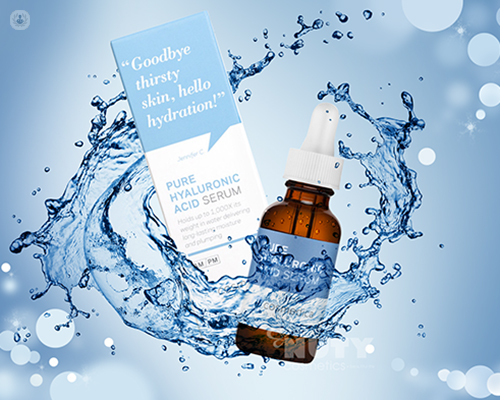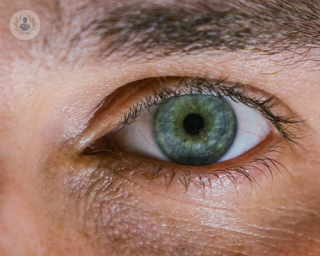Hyaluronic acid
Dr Sunil Chopra - Dermatology
Created on: 06-19-2013
Updated on: 10-10-2023
Edited by: Sophie Kennedy
What is hyaluronic acid?
Hyaluronic acid is a substance naturally found in the body. It is found as a cushioning agent, typically found in fluids around the eyes and in joints, and gives skin a fuller, more youthful look.
Hyaluronic acid is used in medicine to treat joint disorders such as osteoarthritis and is usually taken either orally as a pill, or can be injected directly into the joint. It is increasingly used as a skin treatment to boost the collagen in the skin, and to help retain water within the skin. It is applied as a skin cream, injected, or taken orally.

What are the benefits of hyaluronic acid?
Skin treatment
Hyaluronic acid works as an excellent moisturiser of the skin, helping the skin to retain 1000 times its weight in water within the skin’s cells. The application of hyaluronic acid improves the appearance of the skin, increasing smoothness, decreasing wrinkles, and giving a fuller appearance. It is used as a cosmetic treatment of wrinkles, and to eliminate imperfections in the skin. The downside of hyaluronic acid is that the body naturally breaks down the compound over time, so repeat applications are needed.
Treatment for joint problems
Hyaluronic acid works as a shock absorber within the joints, and can be administered as an injection directly into the joints of those suffering with joint conditions such as osteoarthritis. The treatment leads to more flexible joints, and a reduction of pain caused by wear and tear within the joint. Repeat applications are needed as the body breaks down the hyaluronic acid.
Eye surgery
Hyaluronic acid can also be used in some forms of eye surgery, such as the removal of cataracts, corneal transplant, and detached retina repair. It can be injected into the eye to replace the natural fluids within the eye that are lost during the procedure.
Other uses of hyaluronic acid
As a natural compound found in the body, hyaluronic acid has many uses.
Along with the common uses already mentioned, it can also be used in many cosmetic procedures, such as lip and eyelid filling. It can also be applied to the skin to aid skin healing from wounds such as burns and ulcers, and can also be used as a treatment for gum disease, helping to replace important connecting tissue within the gums, which then aids regrowth of natural healthy tissue, reducing tooth loss.









